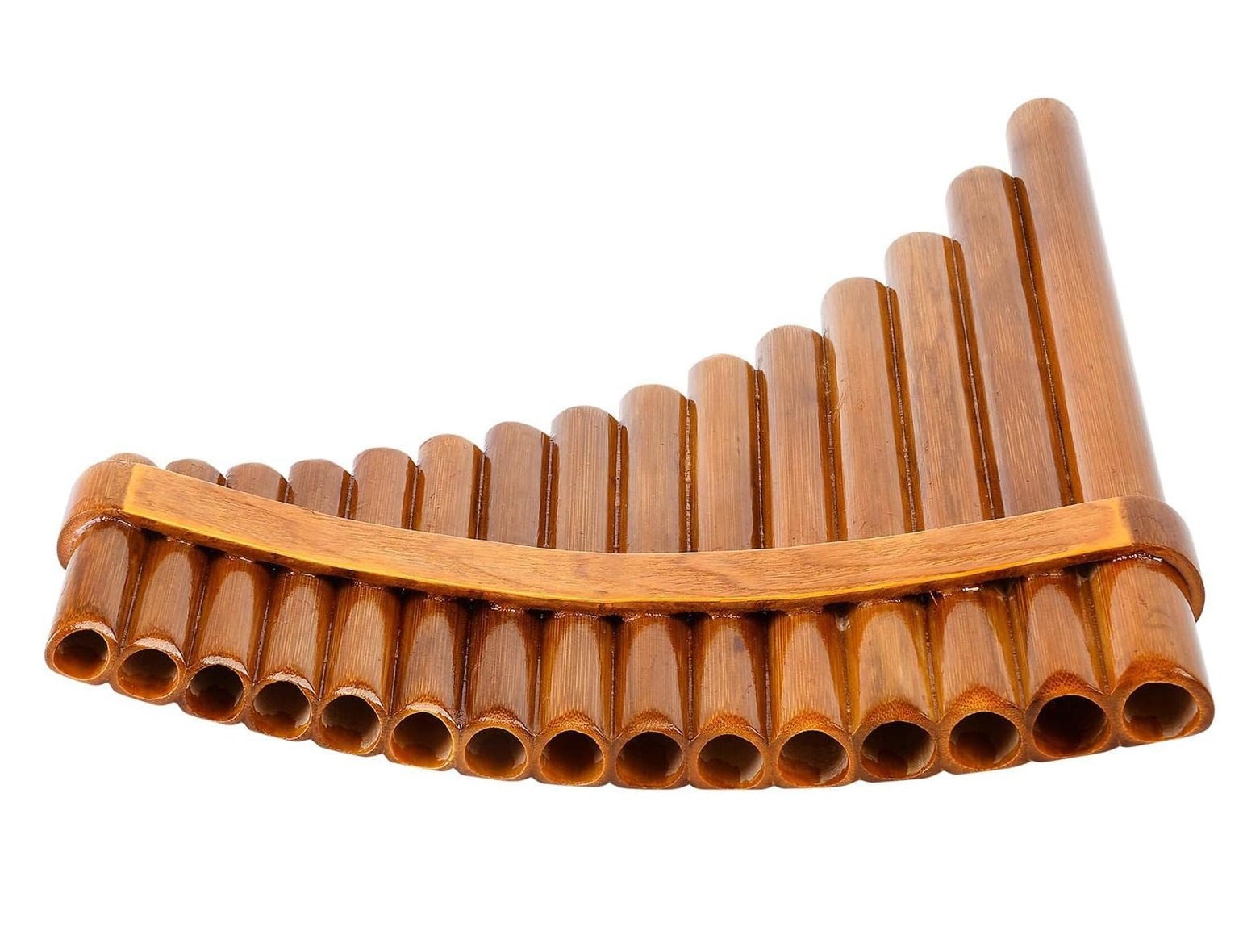Rondador
Woodwinds
America
Ancient
Video
The Rondador is a traditional wind instrument native to Ecuador, known for its unique structure and melodic sound. It consists of a series of cane pipes arranged in a single row, producing a characteristic harmonic effect when played. The Rondador is often associated with Andean music and is considered a national symbol of Ecuadorian musical heritage. This instrument is distinctive because it is capable of producing parallel harmonies, a feature that sets it apart from other panpipes used in Andean music.
Type of Instrument
The Rondador belongs to the aerophone family of musical instruments, which produce sound by vibrating air without the use of strings or membranes. More specifically, it is classified as a panpipe or siku-like instrument, where multiple tubes of varying lengths generate different pitches. Unlike many other panpipes, the Rondador uniquely allows for simultaneous dual-note playing, creating natural harmonies.
History
The Rondador has deep roots in South America, particularly in the Andean region. Its history dates back to pre-Columbian times, with evidence suggesting its use as early as the 15th century or earlier. The instrument was an integral part of indigenous cultures, particularly among the Inca and other Andean civilizations. It remained a vital component of traditional music even after European colonization, preserving its identity and significance within Ecuadorian folk traditions.
Materials Used
Traditionally, the Rondador is crafted using cane, bamboo, or wood, depending on the available resources in the Andean regions. The pipes are often bound together using natural fibers or waxed cords, ensuring their durability while maintaining flexibility. Some modern versions incorporate metal or plastic reinforcements to enhance their longevity, but purists prefer the sound quality of organic materials.
Types and Characteristics
While the Rondador maintains a relatively consistent design, slight variations exist based on region and construction techniques. Some variations include:
Small Rondador: Usually has a smaller range of pipes and is lightweight, producing a higher pitch.
Large Rondador: Features more pipes and a greater tonal range, producing a deeper, fuller sound.
Decorative Rondador: Often made for ceremonial or artistic purposes, featuring intricate carvings or painted embellishments.
The Rondador exhibits several key characteristics that define its identity:
Single-row pipe arrangement: Unlike the siku, which has a dual-row structure, the Rondador’s pipes are placed in a single row.
Harmonic sound production: The instrument produces two notes simultaneously, creating a natural harmonic effect.
Lightweight and portable: Due to its bamboo or cane construction, the Rondador is easy to carry and play.
Traditional craftsmanship: Many instruments are handmade, preserving traditional Ecuadorian techniques.
Sound Production
The Rondador produces sound through the blowing technique, where the musician directs air across the tops of the pipes. Each pipe corresponds to a specific pitch, and the arrangement allows for simultaneous playing of two tones, creating an effect similar to a natural drone or harmonic overtone. The shape and material of the pipes influence the timbre, giving the instrument its distinctive Andean resonance.
Playing Methods
Basic Blowing Technique
Musicians play the Rondador by gently blowing across the pipe openings, controlling airflow and pressure to achieve a clear tone. Unlike other panpipes, the player often tilts the instrument slightly while playing.
Harmonic Playing
A unique feature of the Rondador is its ability to play two notes at once. This is achieved by the design of the pipes, which are tuned in such a way that blowing across them naturally produces a harmonic interval.
Articulation and Ornamentation
Advanced players add vibrato, breath accents, and rhythmic articulation to enhance musical expression. Some also combine the Rondador with vocals or other Andean instruments for a richer sound.
Roles in Music
The Rondador holds a significant role in various musical settings:
Traditional Andean Music: It is a key instrument in Ecuadorian folk music and rural festivals. Accompaniment for Folk Dances: The instrument is often used to accompany traditional dance forms such as the Sanjuanito and Albazo. Ceremonial and Ritual Use: In some indigenous communities, the Rondador plays an important role in spiritual and cultural ceremonies.
Contemporary Fusion Music: Modern musicians incorporate the Rondador into fusion genres, blending it with jazz, electronic music, and world music styles.
Cultural Significance
The Rondador is more than just a musical instrument—it is a symbol of Ecuadorian national identity and Andean cultural heritage. It represents the resilience of indigenous traditions and serves as a bridge between the past and present.
The Rondador is officially recognized as Ecuador’s national instrument, highlighting its cultural importance in the country’s artistic landscape. Many indigenous groups associate the Rondador’s harmonic sound with nature and spiritual elements, believing it has the power to connect the human soul with the divine. With the rise of modernization, there has been a renewed interest in preserving traditional Ecuadorian music, leading to efforts in teaching Rondador playing techniques in schools and cultural institutions.
The Rondador remains an essential part of Ecuador’s musical and cultural heritage. Its distinctive sound, harmonic capabilities, and historical roots make it a unique and valuable instrument in the world of Andean music. As new generations continue to embrace and innovate upon traditional forms, the Rondador’s presence in global music is likely to persist and evolve.
FAQ
What is the Rondador musical instrument?
The Rondador is a traditional panpipe from Ecuador, made of cane tubes arranged in a diatonic scale. It produces a soft, harmonic sound due to its unique construction, often played in Andean music.
How is the Rondador different from other panpipes?
Unlike other panpipes, the Rondador features overlapping tones that create a natural harmonic effect. Its distinct sound comes from its unique arrangement of tubes, setting it apart from similar instruments.
What materials are used to make a Rondador?
The Rondador is traditionally crafted from cane or bamboo tubes, tied together with string or waxed thread. Some modern versions may include wooden or plastic reinforcements for durability.
 Links
Links
References
Other Instrument
Categories



















